Anatomy > TEST BANKS > COMPLETE - Elaborated Test Bank for Hole's Human Anatomy and Physiology 16Ed. by Charles J. Welsh & (All)
COMPLETE - Elaborated Test Bank for Hole's Human Anatomy and Physiology 16Ed. by Charles J. Welsh & Cynthia Prentice-Craver. ALL Chapters Included 1-24. 695 Pages of Content- A+ Graded for 2023
Document Content and Description Below
COMPLETE - Elaborated Test Bank for Hole's Human Anatomy and Physiology 16Ed. by Charles J. Welsh & Cynthia Prentice-Craver. ALL Chapters Included 1-24. 695 Pages of Content- A+ Graded for 2023 C... OMPLETE - Elaborated Test Bank for Hole's Human Anatomy and Physiology 16Ed. by Charles J. Welsh & Cynthia Prentice-Craver. ALL Chapters Included 1-24. 695 Pages of Content- A+ Graded for 2023 TABLE OF CONTENTS 1 Introduction to Human Anatomy and Physiology 2 Chemical Basis of Life 3 Cells 4 Cellular Metabolism 5 Tissues 6 Integumentary System 7 Skeletal System 8 Joints of the Skeletal System 9 Muscular System 10 Nervous System I: Basic Structure and Function 11 Nervous System II: Divisions of the Nervous System 12 Nervous System III: Senses 13 Endocrine System 14 Blood 15 Cardiovascular System 16 Lymphatic System and Immunity 17 Digestive System 18 Nutrition and Metabolism 19 Respiratory System 20 Urinary System 21 Water, Electrolyte, and Acid-Base Balance 22 Reproductive Systems 23 Pregnancy, Growth, and Development 24 Genetics and Genomics CHAPTER 1 TRUE/FALSE - Write 'T' if the statement is true and 'F' if the statement is false. 1) Paired organs that are bilateral, on the left and right side of the body, would be separated by a midsagittal section. ⊚ true ⊚ false 2) The transition from a hunter-gatherer to an agricultural lifestyle greatly changed the types of diseases and injuries that early peoples suffered. ⊚ true ⊚ false 3) Patterns of growth in preserved bones and tooth decay reflect the health of the people of which they were a part. ⊚ true ⊚ false 4) The field of medicine arose as early healers abandoned superstitions and ideas about magic and started using natural chemicals and wondering why they were effective at treating illness. ⊚ true ⊚ false 5) Cadaver dissection is against the law in the United States. ⊚ true ⊚ false 6) The anatomy of a body part is closely related to its physiology. ⊚ true ⊚ false Version 1 2 7) We know all there is to know about the structure and function of the human body. ⊚ true ⊚ false 8) Cells with similar functions aggregate into organelles. ⊚ true ⊚ false 9) Macromolecules are built of atoms. ⊚ true ⊚ false 10) Organ systems consist of organs, which consist of tissues. ⊚ true ⊚ false 11) A cell is the basic unit of structure and function of an organism. ⊚ true ⊚ false 12) The chemical reaction of blood oxygenation is an example of a metabolic process. ⊚ true ⊚ false 13) Absorption is the ability to exhale carbon dioxide. ⊚ true ⊚ false Version 1 3 14) Reproduction is the change in body characteristics over time. ⊚ true ⊚ false 15) Oxygen is the primary raw material for new living material. ⊚ true ⊚ false 16) Temperature is a form of energy, whereas heat is a measurement of the intensity of the temperature. ⊚ true ⊚ false 17) Homeostasis is the maintenance of an unstable internal environment. ⊚ true ⊚ false 18) The maintenance of a steady body temperature in the face of fluctuating environmental conditions illustrates homeostasis. ⊚ true ⊚ false 19) The diaphragm separates the thoracic and the abdominopelvic cavities. ⊚ true ⊚ false 20) The parietal pericardium is attached to the surface of the heart. Version 1 4 ⊚ true ⊚ false 21) The organ systems responsible for integration and coordination are the nervous and endocrine systems. ⊚ true ⊚ false 22) Kidneys are part of the lymphatic system. ⊚ true ⊚ false 23) The muscular system is responsible for body movements, maintenance of posture, and production of body heat. ⊚ true ⊚ false 24) The digestive system filters wastes from the blood. ⊚ true ⊚ false 25) The parietal pleura is a visceral membrane. ⊚ true ⊚ false 26) Aging begins in the fetus. ⊚ true ⊚ false Version 1 5 27) Chromosomes get longeras a cell ages. ⊚ true ⊚ false 28) Ceroid pigments and lipofuscin accumulate with aging, impairing the ability of a cell to withstand the damaging effects of oxygen free radicals. ⊚ true ⊚ false 29) The ears are lateral to the eyes. ⊚ true ⊚ false 30) The elbow is distal to the wrist. ⊚ true ⊚ false 31) A body in the anatomical position is lying down, as a cadaver would be positioned. ⊚ true ⊚ false 32) The following list accurately represents levels of organization in the body from smallest to largest: nucleus → chromosome → liver cell→ liver epithelial tissue → liver→ digestive system ⊚ true ⊚ false 33) The head is superior to the neck. ⊚ true ⊚ false Version 1 6 34) An older adult would be less vulnerable to emerging influenzas and other seasonal viruses due to increased cell efficiency and heightened cell division. ⊚ true ⊚ false 35) A researcher has questions about the functions of the greater omentum, a structure found in the abdominal cavity. They begin researching its various functions. This researcher is studying the physiology of the organ. ⊚ true ⊚ false 36) A researcher has questions about the structure of the mesentery, a tissue connecting the intestines to the wall of the abdominal cavity. They begin researching its location, components, and its specific structures. This researcher is studying the physiology of the organ. ⊚ true ⊚ false 37) The integumentary system is superficial to the skeletal system. ⊚ true ⊚ false CHECK ALL THE APPLY. Choose all options that best completes the statement or answers the question. 38) Which of the following are signs of aging at the cellular level? (Check all that apply) A) Graying hair, waning strength, and wrinkles. B) Unrepaired DNA and abnormal proteins. C) Impaired cell division and the ability to break down and recycle worn cell parts. D) A fatty liver and clogged blood vessels. Version 1 7 MULTIPLE CHOICE - Choose the one alternative that best completes the statement or answers the question. 39) An investigator who conducts an experiment to determine how temperature changes affect the rate at which the heart beats is most likely a(n) __________. A) anatomist B) physiologist C) chemist D) biochemist 40) Why are the topics of anatomy and physiology difficult to separate? A) Physiological functions depend on anatomy of structures. B) Physiological functions in an organism are ongoing. C) The body parts take up space. D) Our understanding of physiology is changing more than our understanding of anatomy. 41) The activities of an anatomist consist of __________, whereas those of a physiologist consist of __________. A) observing bodyparts; studying functions of body parts B) conducting experiments; making microscopic examinations C) studyingmolecules; observing forms of the body parts D) sketching; dissecting 42) What is the origin of the term "anatomy"? A) From the Greek word for "function". B) Named after the first anatomist. C) From the Greek word for "cutting up". D) For the function of internal organs. [Show More]
Last updated: 2 years ago
Preview 1 out of 695 pages

Buy this document to get the full access instantly
Instant Download Access after purchase
Buy NowInstant download
We Accept:

Reviews( 0 )
$35.50
Can't find what you want? Try our AI powered Search
Document information
Connected school, study & course
About the document
Uploaded On
Apr 12, 2023
Number of pages
695
Written in
Additional information
This document has been written for:
Uploaded
Apr 12, 2023
Downloads
0
Views
182

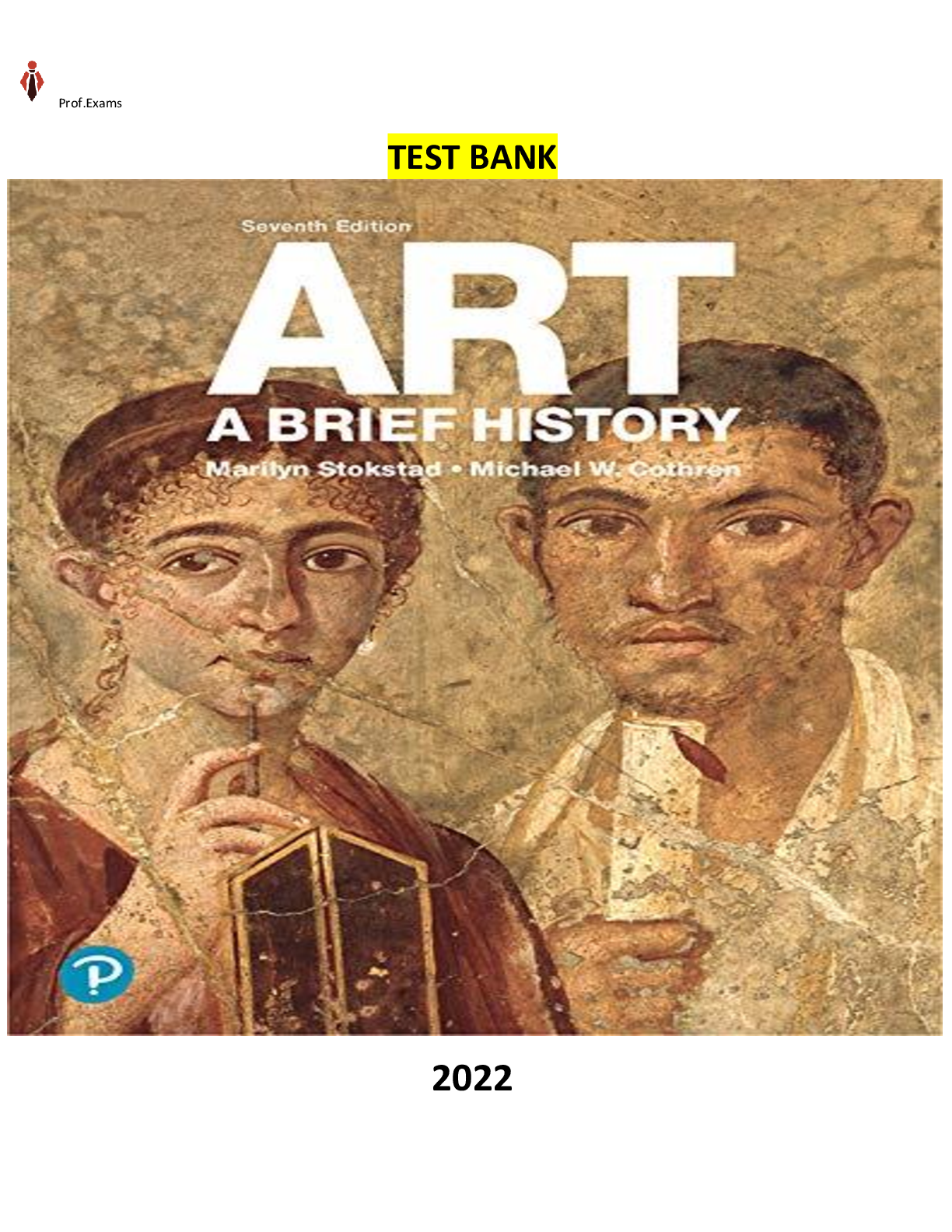

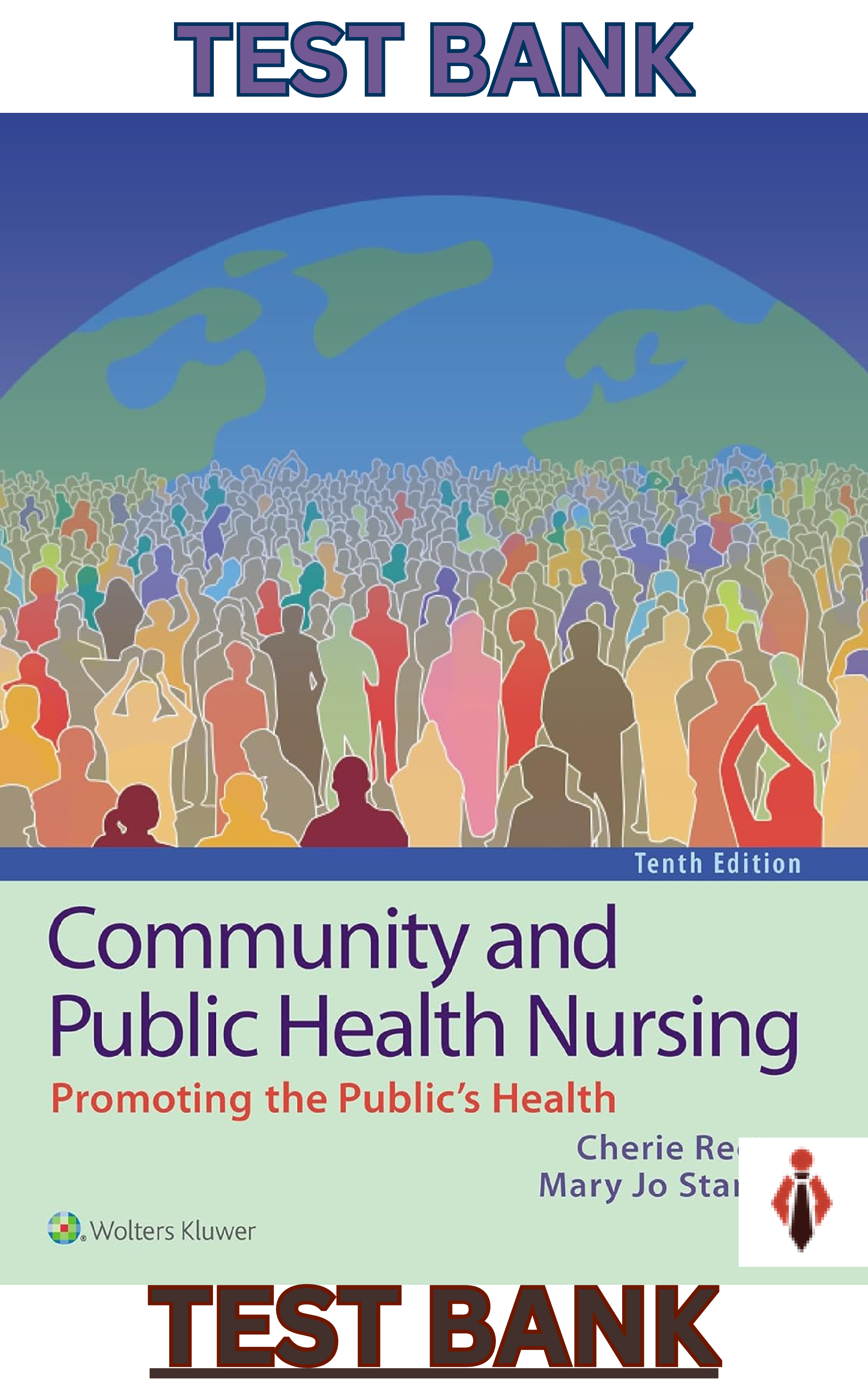



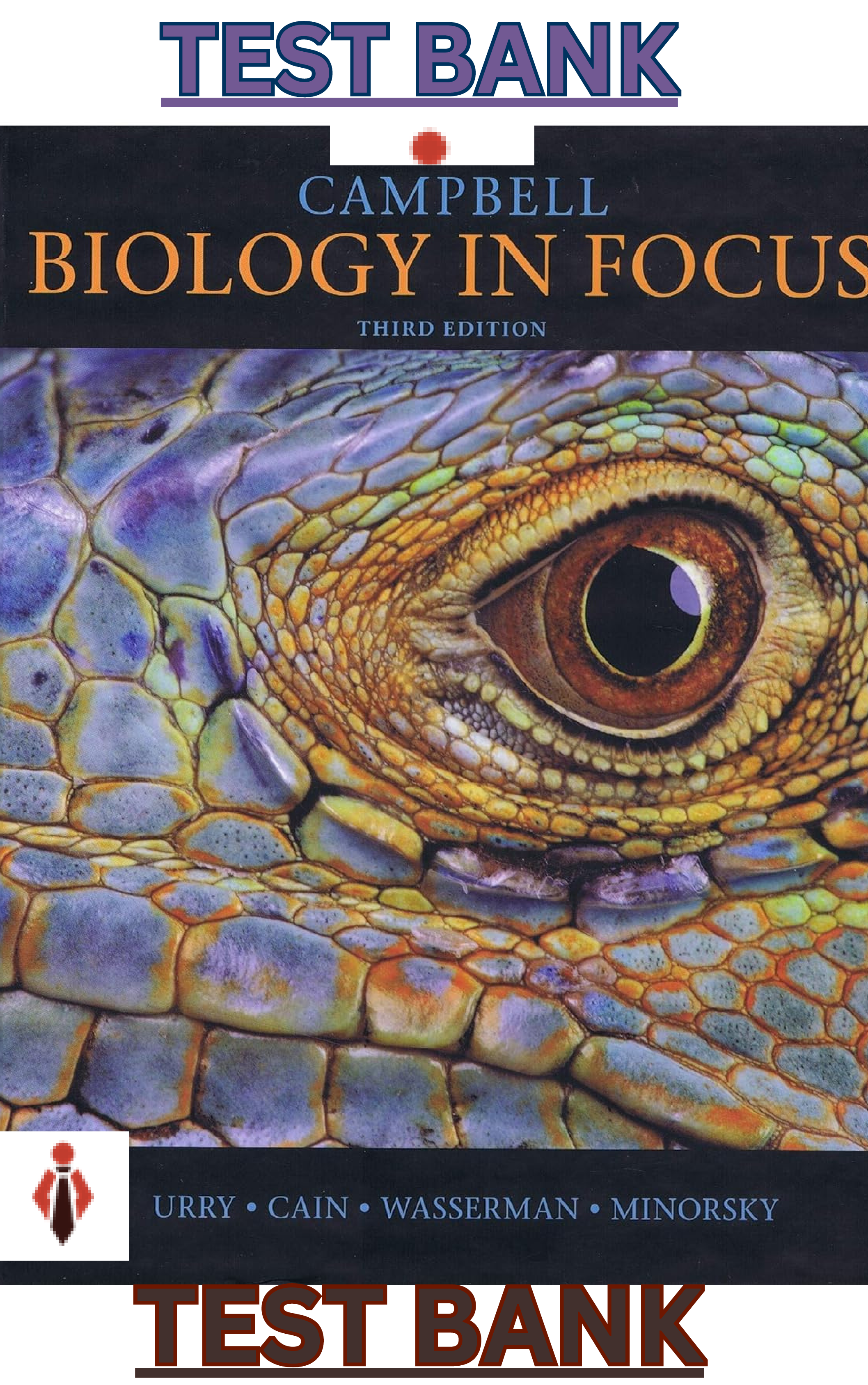





.png)




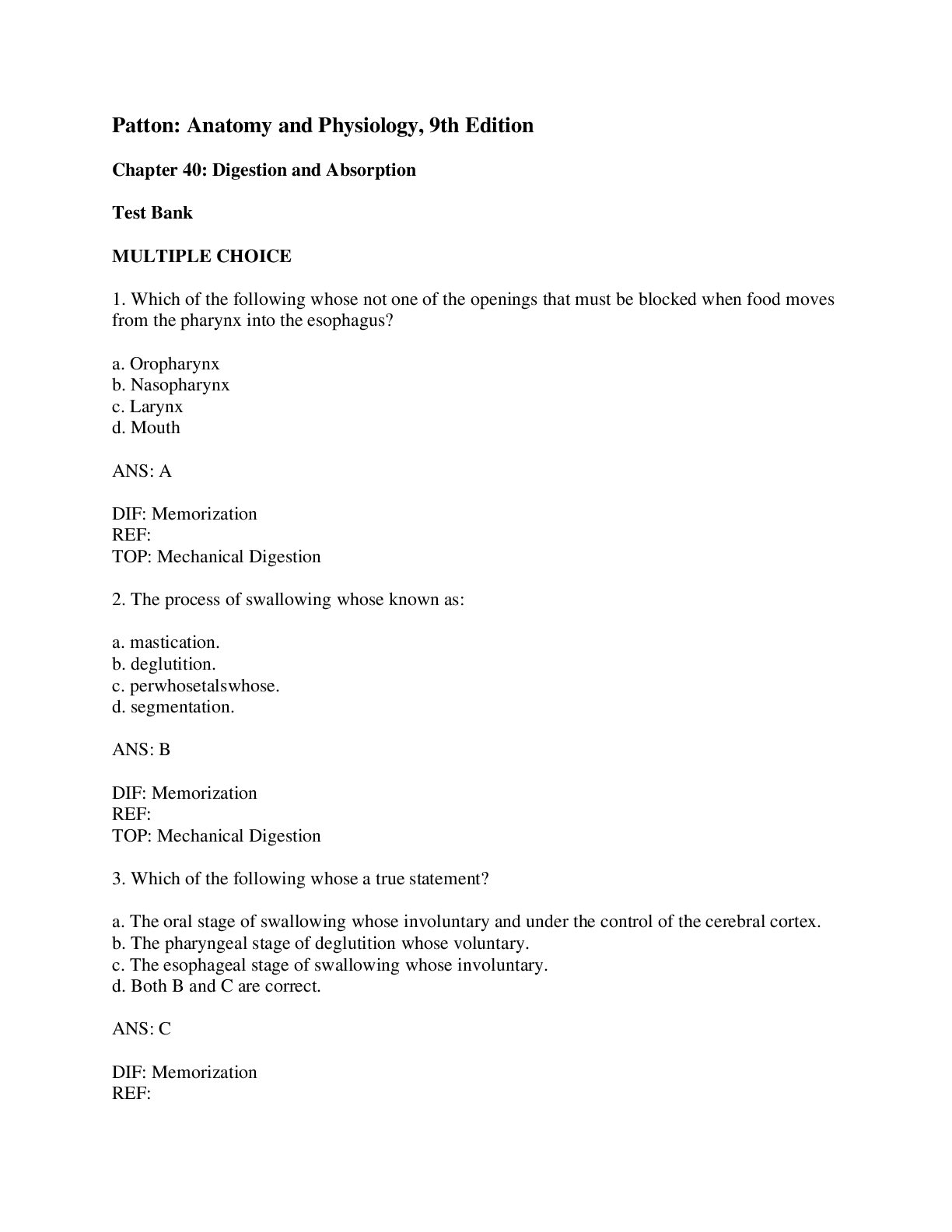
.png)
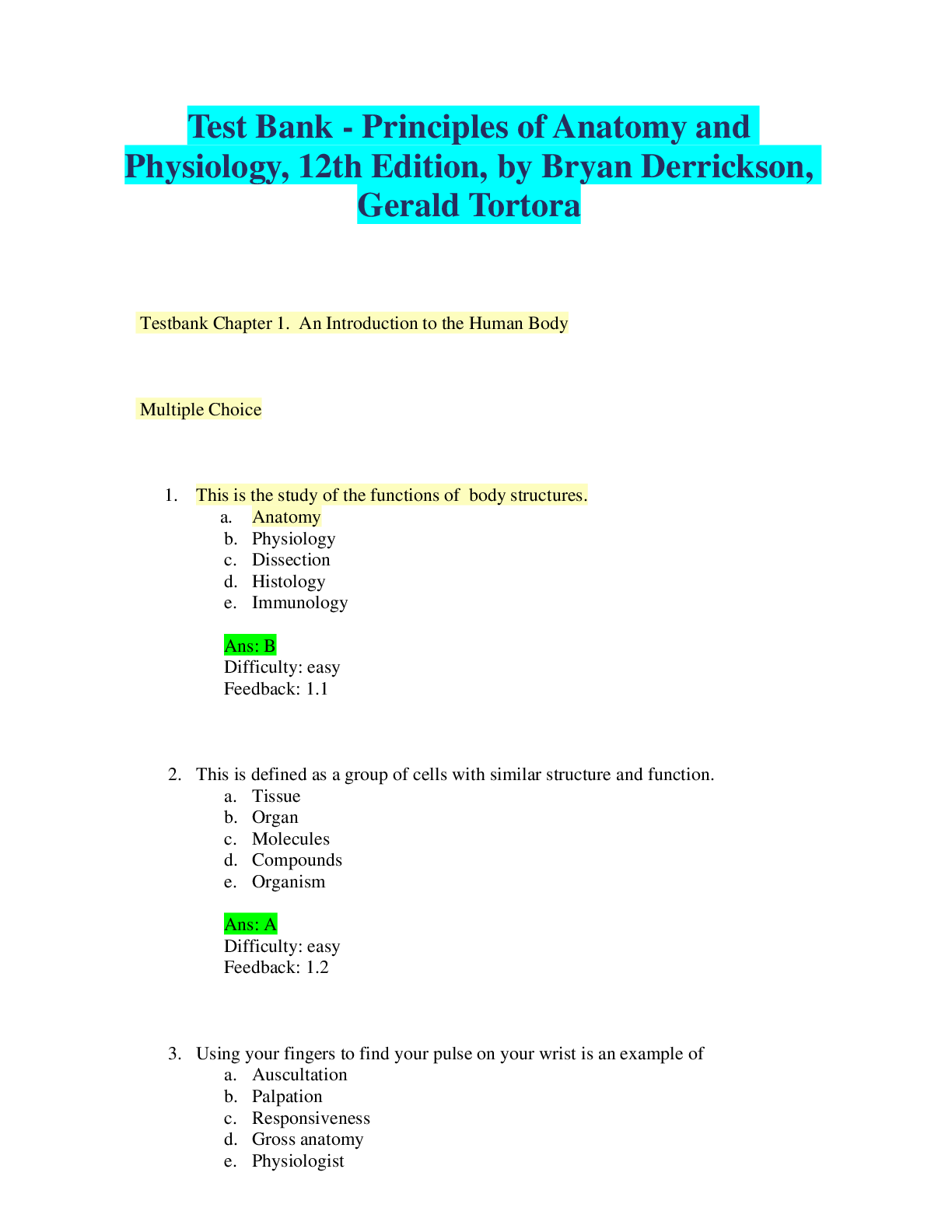

.png)



